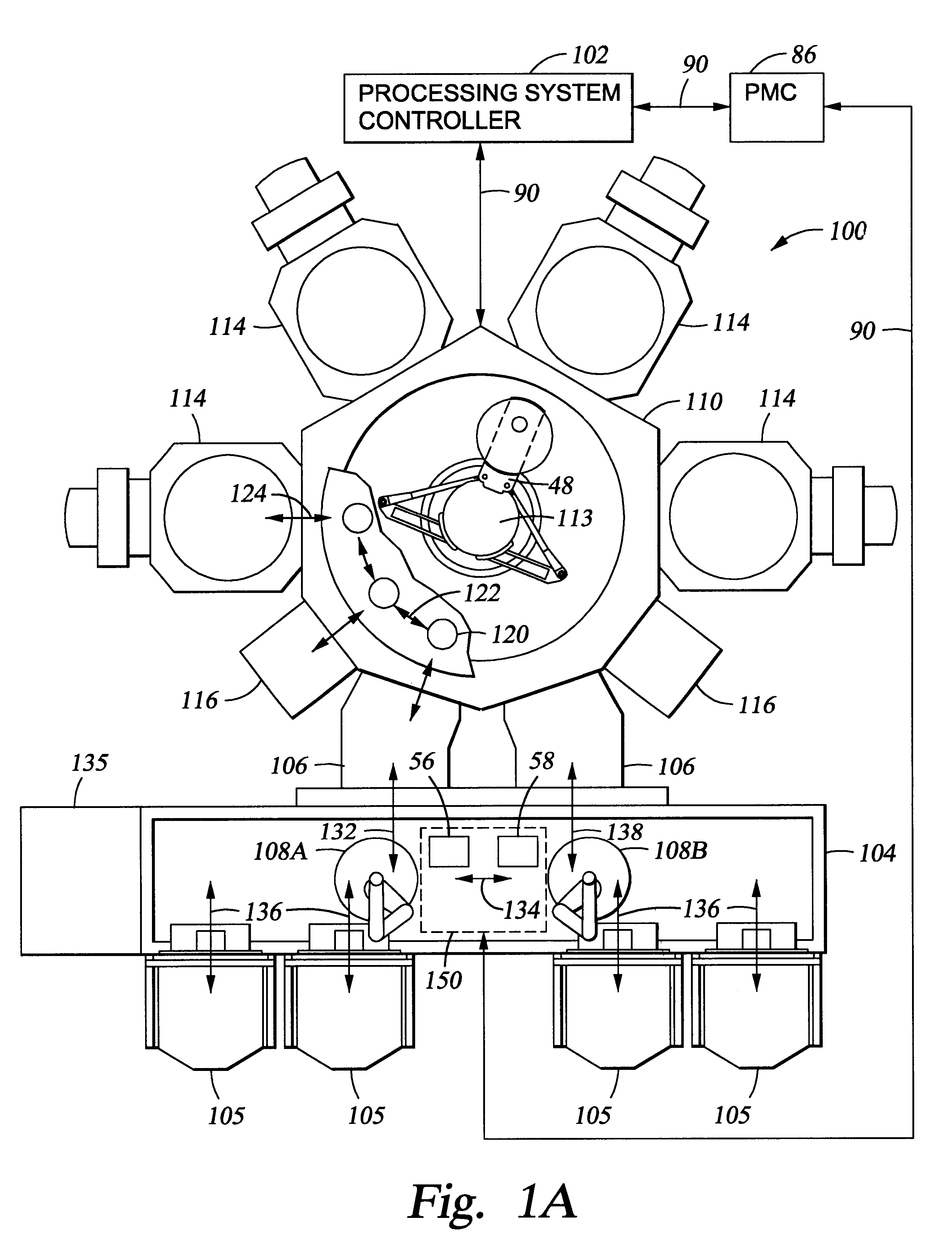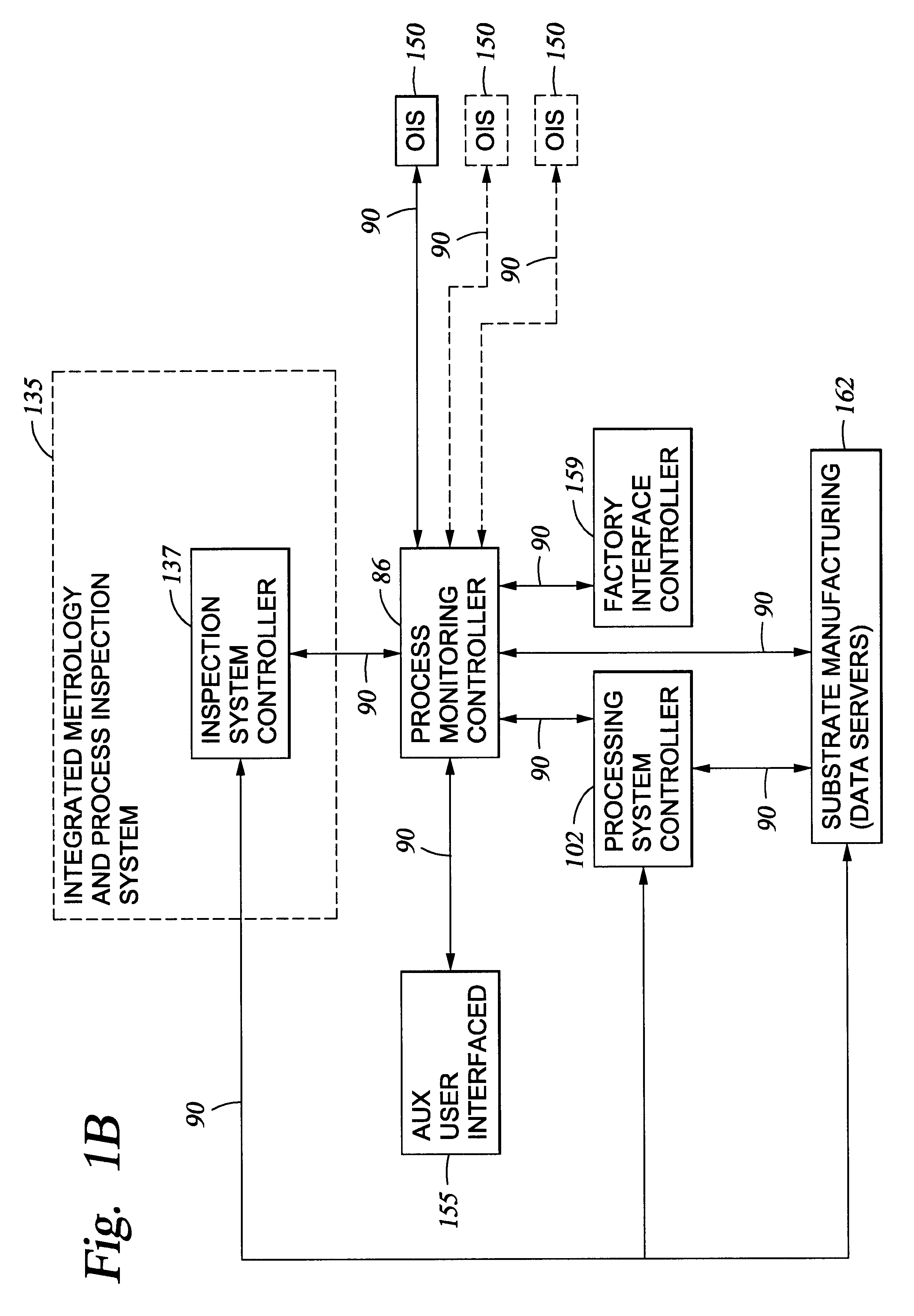Method and apparatus for embedded substrate and system status monitoring
a technology of embedded substrates and monitoring methods, applied in semiconductor/solid-state device testing/measurement, instruments, material analysis, etc., can solve problems such as increased processing costs, defective devices, and increased impact of contamination
- Summary
- Abstract
- Description
- Claims
- Application Information
AI Technical Summary
Problems solved by technology
Method used
Image
Examples
Embodiment Construction
Substrates were processed on a Centura system equipped with a DPS Metal Etch Chamber and an ASP strip / passivation chamber, both available from Applied Materials, Inc., located in Santa Clara, Calif. After etch and strip processing, this hot substrate is cooled to near room temperature in a cooldown chamber which includes an apparatus system according to an embodiment of the invention.
Processed substrates consisted of EPIC-generated substrates, utilizing Applied Materials equipment for all steps except for lithography. The photoresist / metal stack on the substrates was: 8000 A DUV photoresist / 250 A TiN ARC / 5500 A Al--Cu0.5% / 250 A TiN / 200 A Ti / 3000 A thermal oxide. A dense pattern covered about 50% of the substrate, consisting of 0.25 .mu.m lines / spaces.
All substrates were etched using a typical recipe. This etched the metal stack entirely, leaving approximately 5200 A of photoresist on most patterned features (3700 A at the shoulder of patterned lines).
As chip geometries shrink, a gre...
PUM
| Property | Measurement | Unit |
|---|---|---|
| time | aaaaa | aaaaa |
| width | aaaaa | aaaaa |
| width | aaaaa | aaaaa |
Abstract
Description
Claims
Application Information
 Login to View More
Login to View More - R&D
- Intellectual Property
- Life Sciences
- Materials
- Tech Scout
- Unparalleled Data Quality
- Higher Quality Content
- 60% Fewer Hallucinations
Browse by: Latest US Patents, China's latest patents, Technical Efficacy Thesaurus, Application Domain, Technology Topic, Popular Technical Reports.
© 2025 PatSnap. All rights reserved.Legal|Privacy policy|Modern Slavery Act Transparency Statement|Sitemap|About US| Contact US: help@patsnap.com



